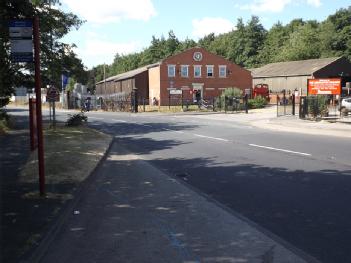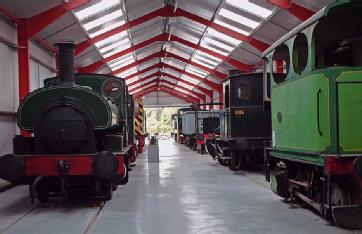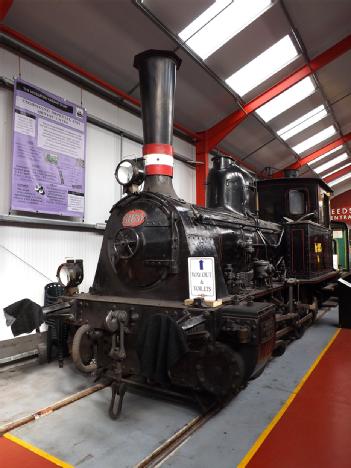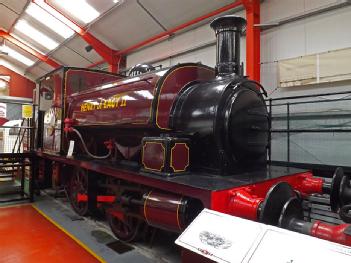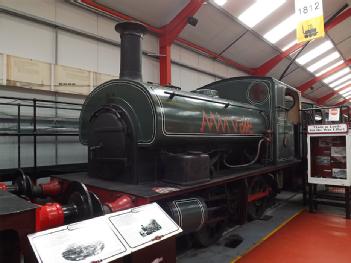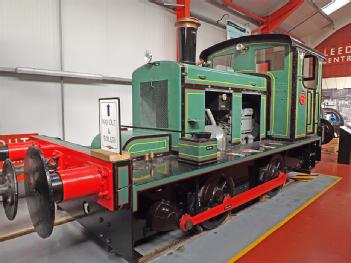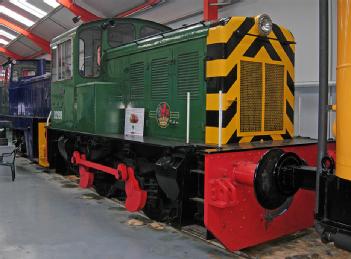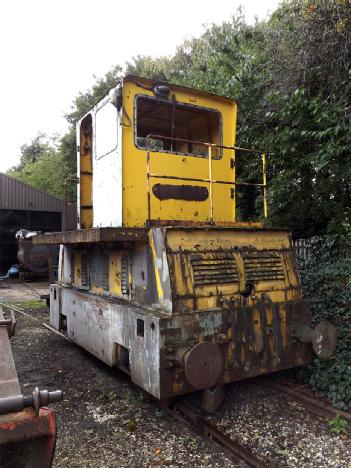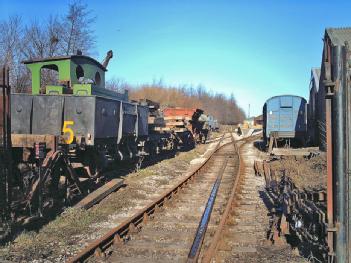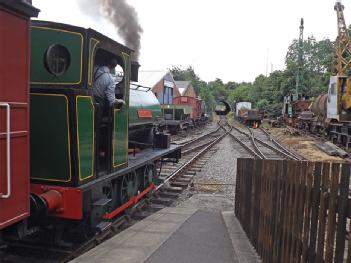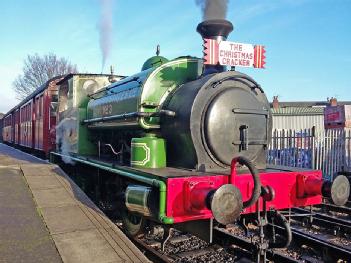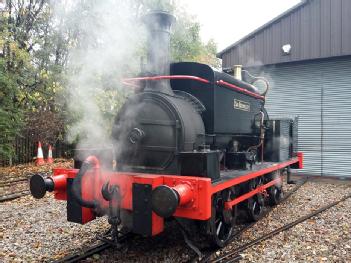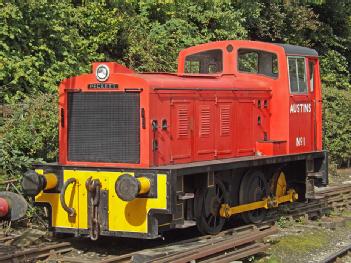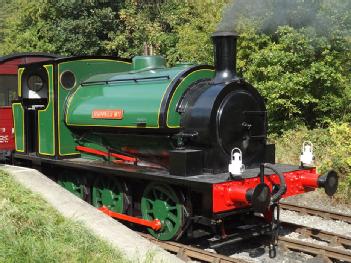
 |
Middleton Railway |
LS10 2JQ Hunslet, Leeds, Great Britain (UK) (West Yorkshire) |
|
| Address |
The Station with Museum & shed
Moor Road |
| Floor area | unfortunately not known yet |
Railway
- Model Railway
- Cranes and Lifts
- Railway Technique
|
Opening times
|
see: middletonrailway.org.uk/index.php/post-covid-operations#Calendar | ||||
|
Status from 04/2021
|
Return ticket Adult: £7.00; Child: £3.00; Family: £18.00 | ||||
| Contact |
|
||||
| Homepage | www.middletonrailway.org.uk | ||||
| Location / Directions |
2 miles south of Leeds City Centre, alongside the M621 Motorway at Junction 5 From Leeds Station there is no direct bus route - taking a taxi is recommended The railway operates passenger services over approximately 1 mile (1.6 km) of track between its headquarters at Moor Road, in Hunslet, and Park Halt, on the outskirts of Middleton Park. Route and stationsAlthough the operational line starts at Moor Road, the line actually begins with the Balm Road Branch which joins the Middleton Railway with the Leeds - Sheffield route of the Hallam & Pontefract Lines. However, the connection to the main network has not been used since 1990 and has been bolted closed preventing access. This section of track crosses Beza Road, Tulip Street and Moor Road. It is currently only used during special events as the line and crossings would need upgrading for regular use. Located few yards from Moor Road level crossing is the line's main terminus,Moor Road station. The site includes the Engine House museum and workshops along with a single platform for departing and arriving trains. The site was once a junction between the link to the Midland Railway mainline via the "Balm Road Branch" and the line to Kidacre Street coal staith near the centre of the city. Departing Moor Road, are a selection of locomotives and rolling stock stored on sidings before the tunnel. The tunnel is the only one located on the route and allows the railway to pass under the M621 motorway. It is approximately 263 feet (80m) long. After the Dartmouth Branch, the line begins to enter Middleton Park. Located close to the site of Broom Pit colliery and on the edge of Middleton Park, Park Halt railway station is the current terminus of services. The station consists of a platform for and a run round loop for trains allowing return running. |
| Description | From Wikipedia, the free encyclopedia: Coal has been worked in Middleton since the 13th century, from bell pits, gin pits and later "day level" or adits. 1812 the Middleton Railway became the first commercial railway to use steam locomotives successfully. John Blenkinsop had decided that an engine light enough not to break the cast iron track would not have sufficient adhesion. He relaid the track on one side with a toothed rail, which he patented in 1811 (the first rack railway), and approached Matthew Murray of Fenton, Murray and Wood, in Holbeck, to design a locomotive with a pinion which would mesh with it. The Middleton Steam Railway middletonrailway.org.uk: The largest part of our Engine House building is the display hall, where our collection of locomotives and other rolling stock is displayed. One of the first things that you will see as you come into the display hall is the replica that we have produced of one of the rack wheels from the original 1812 steam locomotives. This was manufactured in 2012, in connection with the events that we organised to celebrate 200 years of successful commercial steam locomotives. Along with this rack wheel, we also have displays explaining why those early locomotives used a rack and pinion system, how it worked then, and where the modern equivalents are used. Also at this end of the display hall there are exhibits that illustrate how steam locomotives were built and how they are maintained now. These exhibits include various items that have had to be replaced, and the wooden patterns used in making the replacements. In particular there is an old locomotive boiler, which has been opened up so that you can see inside it, to show how such boilers are made. Another very popular exhibit is that two of our steam locomotives are arranged with steps up to them, and a walkway alongside them, so that you can visit their cabs. Children (and adults as well!) really can pretend to be an engine driver here. Then, further along the display hall, there are some fine models on display, as well as real locomotives - both diesel and steam. |
[dsp_museum_detail.cfm]
| Data Compliance | More Information |
 middletonrailway.org.uk
middletonrailway.org.uk 